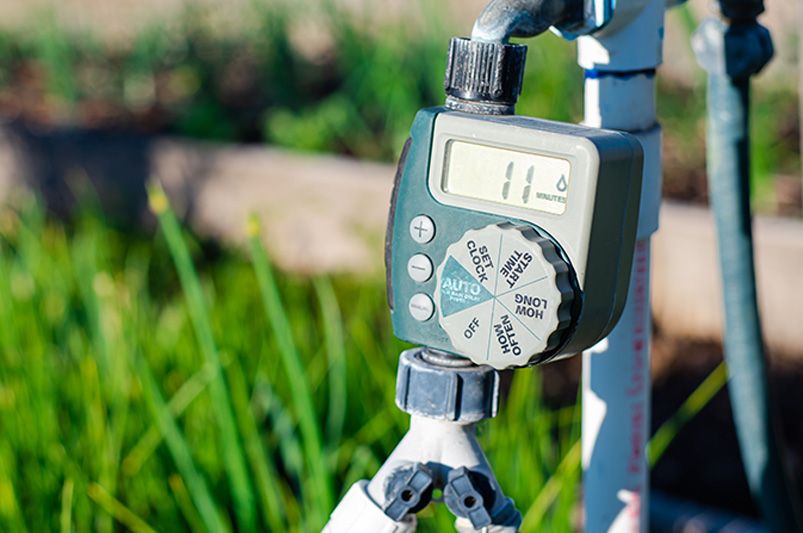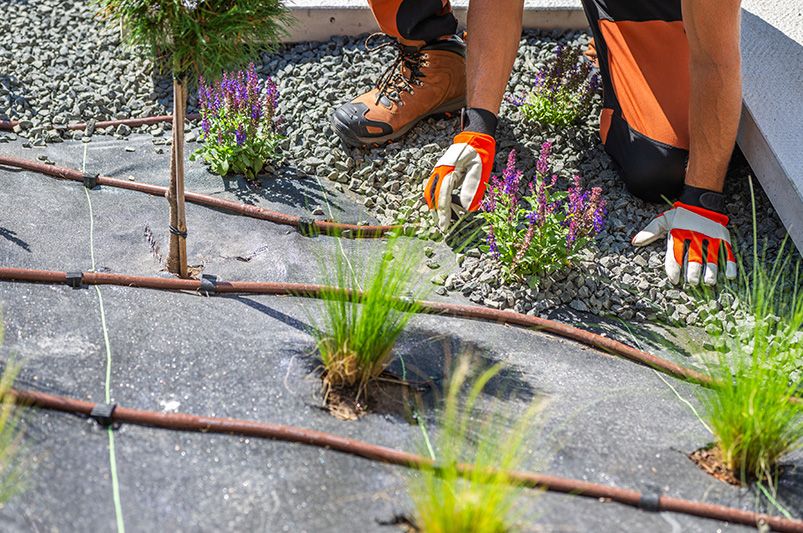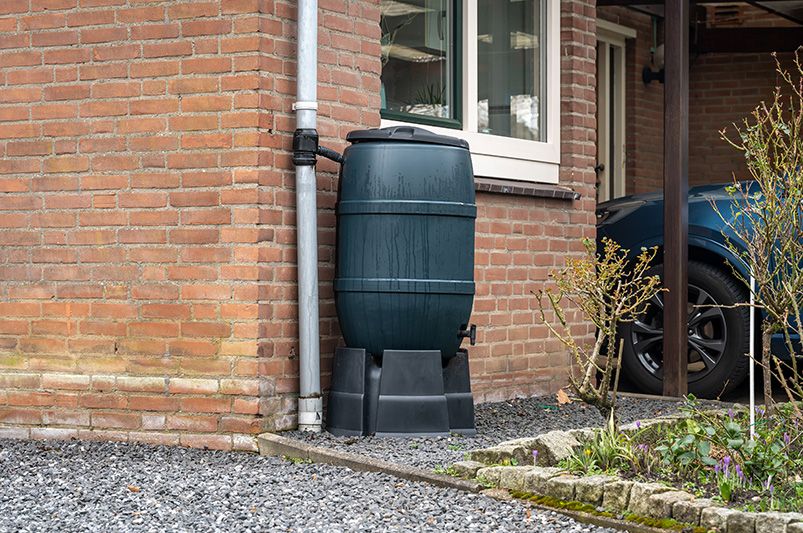
Texas Low-Water Landscaping Rebates: Your Complete Guide
Published: 26/09/2024 | Updated: 26/09/2024
Key Highlights
- Texas offers rebates to encourage residents and businesses to adopt water-efficient landscaping practices.
- These rebates can help offset the costs of transforming your landscape with drought-tolerant plants and efficient irrigation systems.
- Many areas in Texas experience severe weather conditions, making water conservation essential for a sustainable future.
- Rebates vary across the state, so it's essential to check with your local water provider for available programs.
- Take advantage of online resources and success stories to make informed decisions about your low-water landscape.
Introduction
As temperatures go up and severe weather happens more often, Texas has more challenges with saving water. Founded by Sam Houston, this large state has a deep history but is also heading towards a drier future. Luckily, cities and water providers in Texas are working hard to help. They are offering rewards for people who want to create sustainable gardens. If you search for "low-water landscaping near me" on the internet, you could find a lot of great local rebate programs. This is a wonderful chance for Texans.


Understanding Low-Water Landscaping Rebates in Texas
In Texas, where many people care about innovation and limited resources, there’s a helpful solution emerging: low-water landscaping rebates. These programs, supported by different groups all over Texas, give money back to homeowners and businesses. They encourage them to turn their yards into beautiful gardens that use less water.
So, what are these rebates and how do they help Texans? Simply put, they offer some money back for the costs of setting up water-efficient landscaping. This can include swapping thirsty lawns for plants that match the climate or upgrading watering systems to use water better. These rebates help Texans save water while also keeping their outdoor spaces looking great.
The Basics of Low-Water Landscaping
Low-water landscaping is also known as water-wise or drought-tolerant landscaping. It focuses on saving water through smart choices in plants, irrigation, and landscape design. This helps create outdoor spaces that need very little water to grow well.
In Texas, a fast-growing state, using these practices is very important for the future of water resources. Low-water landscaping uses native and adaptive plants that fit well with the local climate. These plants have deep roots and can survive with little water once they are settled in. This helps to lower the amount of water used in gardens.
Low-water landscaping also makes use of mulch. Mulch helps keep soil moist, cuts down on evaporation, and controls weeds. This mixture supports a healthy landscape while saving water.
The Importance of Water Conservation in Texas
Texas has a growing population and many big industries. This makes it important to balance economic growth with taking care of natural resources. Water is a key resource for Texas. It is crucial for farming and city development. With climate change and more people needing water, saving water is now a top concern for Texas.
It is also important to keep water quality high. As a large state in the United States, Texas has a big role in national conservation efforts. By using water-saving landscaping, Texans help their communities and also show other states how to handle similar issues.
Saving water brings economic benefits too. When homeowners and businesses use less water, they can lower their utility bills. This allows them to save money for other important needs.
Eligibility Criteria for Rebate Programs
Eligibility requirements for low-water landscaping rebates differ by area, water provider, and the type of project. Usually, both home and business owners in the service area of water providers that take part are welcome to apply. These programs aim to help everyone save water.
Many programs will need projects to fit certain rules. This can include having a minimum size for landscaping changes or using plants that are approved. It's important to contact your local water provider to find out the exact eligibility rules and program details. This will help you have a smooth and successful application process for the rebate.
Residential Eligibility Requirements
For people living in single-family homes, townhomes, or apartments, residential rebate programs can help make their homes more eco-friendly. To see if you qualify, water providers usually check where your property is located and how your water account is doing. Also, projects need to follow any water rules or guidelines from local authorities or water districts.
There are often rules about how much space must be changed to low-water landscapes. This could mean changing part of the front yard or taking out a good bit of the current lawn. Some programs may also require using certain types of plants, focusing on native or drought-resistant ones.
It's also good to know that eligibility might not just be for homeowners. Homeowners' associations (HOAs) can look into these programs too. They can improve water efficiency in shared areas in their communities.
Commercial Property Eligibility
Businesses, schools, and property owners in Texas can help save water by using special rebate programs. Whether it's a large office building or a store, using landscaping that needs less water can help the environment and make properties look nicer.
To qualify for these rebate programs, businesses often need to meet certain rules. Factors include where the property is located, what type of business it is, and following local water-saving guidelines. Companies interested in these programs usually need to send in a detailed plan of their landscaping ideas. This plan should include what plants they will use, their watering systems, and how the whole design will look.
By showing they care about saving water and using creative landscaping methods, these commercial properties can motivate customers, tenants, and the wider community. These rebate programs are a great chance for businesses to adopt greener practices and benefit financially.

Types of Low-Water Landscaping Rebates
Texas water suppliers have many rebate programs for low-water landscaping. These programs make it simpler for you to use sustainable methods. Knowing about the different rebates can help you find the ones that fit your landscaping needs.
Some programs encourage you to replace traditional grass lawns with water-saving options like drought-resistant plants, mulch, and decorative gravel. Other programs give rebates for improving your irrigation systems to use better technology, like drip irrigation or smart controllers.
Xeriscaping Rebates
Xeriscaping comes from the Greek word "xeros," which means dry. It is a way of designing gardens that save water in dry and semi-dry areas. This method does more than just select plants that don’t need much water. It also includes careful planning and design to save water while making outdoor spaces nice to look at and useful.
Many xeriscaping rebates can pay for a good part of the costs when changing a regular lawn into a water-efficient garden. These rebates can help with different parts of the job, like taking out old grass, preparing the soil, setting up water-saving irrigation systems, and buying plants, trees, and ground cover that don’t need much water.
When homeowners and businesses choose xeriscaping, they help save water and lower the care needed for their landscapes. Using less water means lower water bills and less need for chemicals like fertilizers and pesticides. This makes xeriscaping a smart and money-saving choice for Texas gardens.
Native Plant Rebates
Native plants are important in water-wise landscaping. These plants have changed over many years to grow well in their local climate and soil. In Texas, where summers are very hot and rain can be hard to predict, native plants have special features. They can thrive with little extra watering.
Texas offers rebates for using native plants. The rebates give money back for buying and planting these strong species. This helps save water, supports a variety of wildlife, and creates homes for local animals.
Texas has a wide selection of native plants that fit many landscaping styles. From bright wildflowers that bring color to the area to strong trees that offer shade and shelter, there is a perfect native plant for everyone.
Irrigation Equipment Upgrades
Choosing the right plants is very important for saving water. However, having a good irrigation system is just as important to make sure every drop is used wisely. Traditional sprinkler systems often waste water by watering both plants and pavement. This is why it can be helpful to upgrade to smarter irrigation tools. Texas rebate programs can help with this change.
These rebates usually cover equipment improvements such as drip irrigation systems, smart controllers, and rain sensors. Drip irrigation provides water straight to the plant roots. This helps to reduce evaporation and runoff. Smart controllers change watering schedules based on the current weather and soil moisture.
Upgrading your system not only saves water but also cuts costs on water bills. It also helps plants grow better. By using these rebate programs, Texans can improve their irrigation methods. This helps make sure their gardens and yards get just the right amount of water when they need it.
How to Apply for a Landscaping Rebate
Navigating rebates and incentives can be easy. If you want low-water landscaping rebates in Texas, the application process is simple. First, find your local water provider and check their specific rebate guidelines.
Most water providers have helpful information online. Their customer service teams are ready to answer any questions. If you follow the steps from your provider and make sure your project meets the requirements, you will be on your way to getting a rebate. This will help you turn your landscape into a beautiful, water-efficient space.
Step-by-Step Rebate Application Process
Once you know the requirements of your chosen rebate program, you can start applying. Some programs let you apply online, but others need you to send in forms by mail.
Here’s a simple step-by-step guide:
- Gather necessary documents: This could be photos of your current landscape, a clear plan for your low-water landscape design, and a list of costs for materials and labor.
- Fill out the application form: Make sure to include all the requested details, and ensure they match your supporting documents.
- Submit your application: Follow the steps given by your water provider, whether it is online, by mail, or in person.
After you send your application, your water provider may check your project details. This is a chance to ask any questions and make sure your project meets the program rules. Once your application is approved, you can start changing your landscape to use less water.

Necessary Documentation for Your Application
To make sure your application goes smoothly, you need to give all the documents your water provider asks for. These usually include information about your property, your landscape design, and the costs involved.
You will likely need to show proof that you own the property or live there. This could be a recent utility bill or property tax statement. You also need a site plan or drawing of your current landscape. It should clearly show the areas you want to change.
Next, collect detailed cost estimates from licensed contractors or landscaping experts. They should list both material costs and labor fees. Having these documents ready before you start your application will make the process easier and show that you are prepared.
Maximizing Your Rebate Benefits
To get the most financial benefits from low-water landscaping rebates, it's important to plan your project well. Start by looking into the different rebate programs in your area. Check their requirements, how much they pay, and the deadlines for applying. This will help you find the programs that fit your landscaping goals and budget.
Think about using more than one rebate to save even more. Some water providers give extra benefits for adding specific water-saving tools like rainwater harvesting systems or systems that reuse graywater in your landscape design. By checking these options and planning your project carefully, you can get the most out of your rebates and spend less money on creating a beautiful and water-efficient landscape.
Tips for Planning Your Low-Water Landscape
Planning your low-water landscape is more than just replacing your lawn with cacti and rocks. A good water-wise landscape is pretty and useful. It should fit nicely with your home’s style and your way of life. Start by checking the specific conditions of your site, like how much sunlight it gets, the type of soil, and how well it drains.
Then, make a plan that includes different kinds of plants. Use groundcovers, shrubs, and small trees to add beauty and depth. Group the plants based on their water needs. Put plants that need similar amounts of water close together to make watering easier.
Don't forget to add hardscaping features, like patios, walkways, and retaining walls. They make your landscape more attractive and help define areas that need less watering. Remember, your low-water landscape should feel like an extension of your home—a place to relax, have fun, and enjoy nature.
Common Mistakes to Avoid in the Application Process
Even if you have good intentions, some mistakes can keep you from getting your low-water landscaping rebate application approved. One big mistake is not checking the eligibility requirements carefully. Before you start planning your new landscape, make sure your property, project scope, and chosen plants fit the program’s rules.
Another common error is giving incomplete or wrong information on your application. Make sure to double-check every detail. It should match your supporting papers, like your site plan and cost estimates.
Finally, don’t rush through the application process. Take your time to prepare your documents well, gather any needed permits, and answer any questions from your water provider. A carefully prepared application has a better chance of getting approved. This way, you can turn your dream of a water-saving landscape into a reality.
Success Stories: Before and After
Seeing how low-water landscaping can change a space can encourage others to try it too. Sharing success stories, along with great before-and-after photos, shows how these changes save water and also make properties more beautiful and valuable.
From small homes to big businesses, these stories highlight how flexible low-water landscaping is in different places. These uplifting changes show that saving water and looking good can happen together. This can motivate more people to be part of a sustainable future.
Residential Success Stories
Imagine a typical suburban home with a big, thirsty lawn that needs a lot of care. Now think of that same home with a bright, layered garden full of plants that don’t need much water, a dry creek bed that channels rainwater, and a nice patio to enjoy cool evenings. This is the change you can see with low-water landscaping.
In Texas, many homeowners have changed their thirsty lawns into smart, water-saving places. They have replaced much of their grass with native plants and gravel paths. Some have even set up systems to collect rainwater to water their gardens. These homeowners are saving money on water bills, helping the environment, and increasing the value of their homes.
These changes help not only individual homeowners but also encourage their neighbors to think about their own gardens. As more stories of success spread, the idea of saving water through smart landscaping grows stronger, creating a wave of positive change in communities.
Commercial Success Stories
The benefits of low-water landscaping go beyond homes. Many businesses are starting to see the good things that come with using less water. Picture an empty office park turned into a beautiful green space. It could have native plants, special paving to reduce runoff, and a peaceful area for workers to relax.
Success stories show how companies are using smart landscaping to boost their image and save water. Hotels and restaurants create nice outdoor dining areas that save water. Retail stores use drought-resistant plants and smart watering methods. These companies help the environment and save money with lower water bills and higher property values.
Also, by starting big low-water landscaping projects, businesses can show more people these smart solutions.

Maintaining Your Low-Water Landscape
Once you have changed your yard into a strong water-friendly area, it's key to take care of it to keep it healthy over time. These types of yards are made to do well with little water, but they still need some attention to look great.
If you know what your plants need and follow some easy maintenance tips, you can keep your low-water yard doing well for many years. A well-taken care of low-water yard is not only good for the environment but also makes your home more beautiful and valuable.
Best Practices for Landscape Maintenance
Maintaining your low-water landscape well will help your plants stay healthy. It is very important to learn how to water plants properly. Even plants that can survive on little water still need regular watering, especially when they are just starting to grow.
Using mulch is also very helpful for keeping your low-water landscape healthy. Putting organic mulch around your plants helps keep the soil moist, control the temperature, and reduce weeds. Check your irrigation system often for leaks or issues. This can save water and protect your plants.
Also, check how your plants are doing from time to time. If needed, make changes such as cutting back overgrown branches, moving crowded plants apart, or adding compost and organic fertilizers to the soil.
Seasonal Care Tips for Texas Landscapes
Texas has a variety of weather, with hot summers and cold winters. This means you need to change how you care for your low-water landscape with the seasons. In the hot summer, make sure you water your plants enough, especially when there is little to no rainfall.
When fall comes, it’s a great time to plant new water-wise plants. They will have time to grow strong roots before winter. To get your low-water landscape ready for winter, protect plants that can get frost damage. Also, make sure there is good drainage to keep the roots from rotting with too much moisture.
As spring arrives, the weather warms up, and plants start to grow. This is the time to cut back dead or damaged branches, feed your plants, and add new mulch around them. By changing your care routine to match Texas' climate, you can keep your low-water landscape healthy all year.
Conclusion
In conclusion, using low-water landscaping in Texas helps save water. It can also save you money through rebate programs. To benefit the most from these programs, know the eligibility rules. Look into different types of rebates, such as xeriscaping and native plant rebates. Follow the application steps carefully. There are many success stories that show how good sustainable landscaping can be. Plus, maintenance tips will help keep your eco-friendly landscape looking great for a long time. Start your path to a greener future today. Don’t forget to share this important information on social media to encourage others to get involved.
Frequently Asked Questions
What is the average rebate amount for low-water landscaping in Texas?
The average rebate for low-water landscaping in Texas can change a lot. It depends on things like the size of the project, where it is located, and the rebate program being used. Generally, rebates fall between a few hundred dollars and several thousand dollars. This gives helpful financial support to Texans who want to create landscapes that use less water.
Can renters apply for low-water landscaping rebates?
Most low-water landscaping rebates are meant for property owners. However, some programs may allow renters to apply if they have signed permission from their landlords. It is a good idea to check with your local water provider and look at their program guidelines. This will help you see if you qualify as a renter.
Are there any deadlines to apply for these rebates?
The deadlines for low-water landscaping rebates in Texas change based on the program. It is very important for you to check with your local water provider about their specific deadlines. Some rebates are available anytime, while others have strict deadlines.
How long does it take to receive the rebate after approval?
The time you wait for a rebate after it is approved can change. This mainly depends on the water provider and how many applications they are handling. Usually, it takes a few weeks to a couple of months to get your rebate check.
Can I combine low-water landscaping rebates with other conservation incentives?
Yes, in many situations, you can use low-water landscaping rebates along with other savings programs from your water provider or local government. These may include rebates for putting in rainwater systems, graywater reuse systems, or updating to high-efficiency toilets and appliances. This can help you save more money and boost your conservation efforts.
Where can I apply for low-water landscaping rebates?
You can apply for low-water landscaping rebates in Austin, at the AustinTexas.gov website, for both commercial and residential customers. If you search for "low-water landscaping near me" on the internet, you'll discover a variety of excellent local rebate programs. This is a fantastic opportunity for Texans!
Need assistance with your low-water landscaping makeover?
Shrubhub’s landscape design packages can significantly transform the lives of homeowners by delivering customized, professional landscaping plans tailored to their unique space and personal style with low-water conservation in mind. With the ease of online collaboration, you are guided step-by-step through a design process that fundamentally reshapes your outdoor environment. The result is an aesthetically pleasing, low-water landscape that maximizes the potential of your property.


